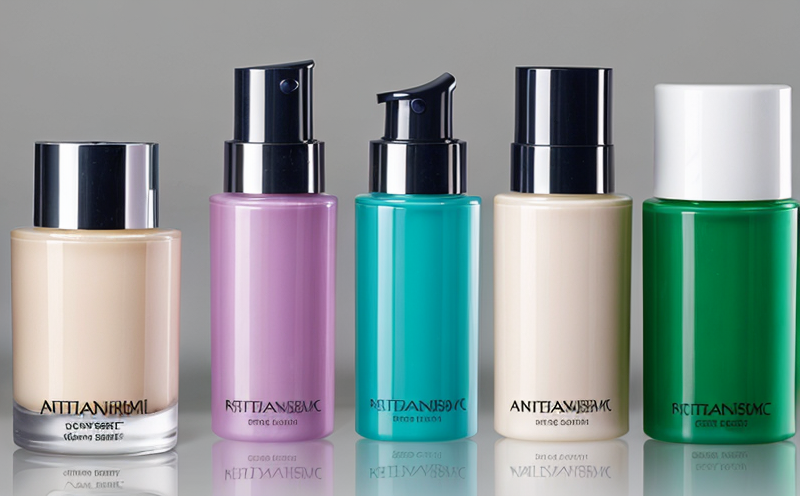Microbial Kill Rate Testing of Preservatives in Cosmetics
The microbial kill rate testing of preservatives in cosmetics is a critical process that ensures product safety and efficacy. This testing evaluates the effectiveness of preservatives in inhibiting or eliminating microorganisms, including bacteria, yeasts, and molds, which can cause spoilage or contamination.
Preservatives are essential components of cosmetic products to extend shelf life and protect against microbial growth. However, their efficacy must be rigorously tested before being incorporated into formulations. The test involves exposing the preservative to a known population of microorganisms under controlled conditions, then measuring the reduction in microbial count over time.
The process typically follows these steps:
- Selection of appropriate microorganism strains
- Culturing and inoculating the microorganisms onto agar plates
- Contacting the preservative with the cultures for a specified duration
- Recounting the surviving colonies after incubation
The results are expressed as the kill rate, which indicates how effectively the preservative eliminates or inhibits microbial growth. This data is crucial for regulatory compliance and ensuring product quality.
Given the variety of preservatives available, it's important to select a testing method that accurately reflects real-world scenarios. For instance, some tests may use a combination of different microorganisms and concentrations to simulate various environmental conditions encountered by cosmetic products.
The significance of this test extends beyond just ensuring product safety; it also plays a role in enhancing consumer confidence and trust. Regulatory bodies like the FDA (Food and Drug Administration) and EU Cosmetics Regulation require rigorous testing procedures to demonstrate compliance with relevant standards.
Why It Matters
The microbial kill rate test is not just about meeting regulatory requirements; it's also about protecting consumer health and ensuring product integrity. Here are some key reasons why this test is so important:
- Prevents Contamination: By effectively killing or inhibiting microorganisms, preservatives prevent the growth of pathogens that could lead to contamination.
- Enhances Shelf Life: A robust preservative system can significantly extend the shelf life of cosmetic products without compromising their quality.
- Regulatory Compliance: Many countries mandate specific tests for preservatives, and failure to meet these standards can result in product recalls or legal issues.
- Consumer Trust: Products that pass rigorous microbial testing are more likely to be trusted by consumers, which can enhance brand reputation.
In addition to these benefits, the test helps R&D teams refine formulations and improve the overall quality of cosmetic products. It provides valuable insights into how different preservatives perform under various conditions, enabling informed decision-making during product development.
For procurement teams, understanding the microbial kill rate testing process ensures they select suppliers who adhere to high-quality standards, thereby reducing the risk of substandard ingredients entering their supply chain.
International Acceptance and Recognition
- FDA Compliance: The United States Food and Drug Administration (FDA) requires that all cosmetic products be safe for use. Microbial kill rate testing is a key component of this safety evaluation.
- EU Cosmetics Regulation: In the European Union, the Cosmetics Regulation (EC 1272/2006) mandates strict standards for preservatives and requires microbial efficacy tests to ensure product safety.
- ISO Standards: International Organization for Standardization (ISO) standards such as ISO 846 provide guidelines for microbiological testing in cosmetics, ensuring consistency across different regions.
These regulations not only protect consumers but also promote fair competition within the industry. By adhering to these standards, manufacturers can ensure that their products meet global expectations and gain acceptance in various markets.
Compliance with international standards is essential for businesses looking to expand their market reach. It demonstrates a commitment to quality and safety, which are crucial factors when entering new territories or seeking certification from recognized bodies.
Environmental and Sustainability Contributions
The microbial kill rate testing process itself has minimal environmental impact; however, its role in ensuring product quality contributes indirectly to sustainability efforts. By preventing contamination and extending shelf life, the use of effective preservatives can reduce waste generation and resource consumption.
- Reduced Waste: Effective preservatives help maintain product integrity, reducing the need for premature disposal due to spoilage or contamination.
- Energy Efficiency: By extending shelf life, products require fewer replacements, which in turn reduces the overall carbon footprint associated with production and distribution.
In addition, the testing process itself is designed to be efficient, using minimal resources and energy. The use of controlled laboratory conditions ensures that only necessary materials are utilized, further minimizing any potential environmental impact.
For companies committed to sustainability, microbial kill rate testing aligns with broader corporate social responsibility (CSR) goals. It demonstrates a proactive approach to product safety and quality assurance, which can be communicated as part of a company's commitment to responsible business practices.





